I was hired to help a bank with unconscious bias. What I found shocked me.
Not long ago, a big bank asked me to help them address unconscious bias in their organization. Hallelujah, I said, as I cleared my schedule for them.
The first thing I did was interview people across the organization to get a feel for the culture. And yes, I did find unconscious bias and micro-aggression … at every level.
When it came to people with direct reports, though, I also found an astounding absence of basic leadership skills. They couldn’t articulate specific goals, how to set a clear expectation, or coach a struggling employee. They didn’t know the basics of leadership.
It wasn’t really their fault.
Most of these folks were high-performing individual contributors who had been promoted to leadership roles—with absolutely no leadership training on route.
When a person is put in charge of leading others – without learning the leadership skills necessary to build trust, transparency, and accountability – unconscious bias rear its ugly head. That’s what was happening here.
Unconscious bias is a symptom of the lack of leadership skills
Unskilled leaders default to what’s most familiar. We’re all human. If we aren’t trained to be great interviewers, we hire people who look, act, and think like we do. If we can’t clearly define roles and build the necessary skills in new team members, we are going to give the work to those who can already do it. That’s Bias 101.
Great leaders spend an extraordinary amount of time thinking about their people, the skills those people need to succeed, and how to effectively train, coach, and support them in becoming masterful at those skills.
If we can’t identify the specific skill needs for an individual and then help them proactively create and build those skills, we are failing not only that person, but the whole team, our customers, and our bottom line results.
We can’t expect Human Resources to solve this one for us
What if the root of much of the inequality and biased behaviors around women and BIPOC team members isn’t only innate unconscious bias, but a lack of high-quality leadership training? What if passing the training buck to HR practically guarantees that inequality and hurtful biases will continue to be a problem?
HR can only cover the organization’s broad strokes. As team leaders, it’s our job to know our people well and provide opportunities every day that enable them to reach their full potential as employees, leaders, and successful coworkers.
Let’s face it. Very few employees come into a role fully trained in the skills and cultural nuances of our organizations. Even people who are promoted for being great at their jobs can get the shock of their lives on day-one of their new roles.
The same is true for people who are promoted to leadership positions. Relying on the “one and done” HR treatment doesn’t begin to cut it. Instead, we need to support our leaders – new and old – with meaningful, ongoing, leadership development.
Basic leadership skills are at the heart of fairness and equality
Basic leadership training isn’t one more burden to add to our lists. It’s a remarkable opportunity to give our people the tools they need to support each other and blow the doors off their team goals.
Imagine the impact we could have if we put our hearts, souls, and money into really, truly training our leaders to support and grow their direct reports. We wouldn’t just transform our corporate cultures, the effects would also ripple out into society as a whole.
Rather than doing “tick the box” sessions on diversity and inclusion, we should be revamping our training practices and fortifying our budgets to teach the kind of leadership skills that value and promote the specific strengths and potential of every … single … person in our organization.
6 Steps to Eliminating Unconscious Bias in Your Organization
- DEFINE LEADERSHIP: Until you specifically define the behaviors and skills it takes to be a successful leader in your organization, you can’t hold people accountable for leading. So, step one is to describe what leadership looks like. What specific skills and leadership behaviors are essential to the success of every leader in your organization?
- DISCUSS LEADERSHIP: Leadership isn’t a private club; it works best when it’s shared openly. This means that your clearly defined essential leadership skills need to be common knowledge throughout the organization. How can you make these attitudes, behaviors, and skills public — tied to every communication, review, and bonus?
- PRACTICE EVERYDAY: Posters aren’t enough. For these skills to become second nature, they need to be consistently exercised … in the workplace. So, the next step is practice. This means intentionally building those primary leadership skills into everyday job roles and tasks such as team meetings and projects. Instead of burying ourselves in spreadsheets, we should be practicing leading every single day, in every way we can.
- PROMOTE FEEDBACK: Leading is a social activity. This means leaders need regular opportunities to hear feedback on what’s working, what isn’t, and what should be tried instead. Where can you create regular opportunities for people to support each other with positive, respectful, and useful feedback? Bonus: Strong feedback loops help cultivate the learning culture I think we all desire within our organizations.
- EVERYBODY PLAYS: Inclusivity isn’t exclusive. This means even your most senior executive needs to demonstrate these skills and model the behaviors expected of rank and file leaders. Regular, public demonstrations of leadership at every level allows others to learn by mirroring.
- MEASURE PROGRESS: The beautiful thing about clearly defining leadership and promoting consistent practice and feedback across the entire organization is that you can track its success. Every review, bonus decision, and even daily communication can be an opportunity for accountability.
And the next time someone is called in to investigate unconscious bias, successful leaders will be able to clearly describe their leadership skills and how they use them to support their colleagues, strengthen their teams, and eliminate opportunities for unconscious bias.
Leading with trust and transparency can halt unconscious bias
Yes, employees must be responsible and accountable for their own attitudes, actions, and behaviors.
Strong leaders make this more likely by working hard every day to bring out the best in all of their team members. In my opinion, this is the only way our corporate cultures will climb out of the unconscious bias trap.
Hot topic alert! Who wants to discuss it? How do you think basic leadership skills can help us be better at promoting equality, diversity, and inclusiveness in our organizations? Share with me in the comments below.

At the Courageous Leadership Institute, we leverage our work with over 300,000 leaders and employees from 400+ companies to offer leadership programs that impact results with customers and employees immediately.
Cindy Solomon is CEO of the Courageous Leadership Institute, a thriving global leadership training and research organization with access to up-to-the-minute insights on how today’s most innovative corporations are defining the future of business. She is also the author of two books, The Rules of Woo and The Courage Challenge Workbook.










1 thought on “What if Unconscious Bias is Just Bad Leadership?”
This article was like a light bulb going off for me. It seems to be the norm to promote outstanding high performers to management roles, without equipping them with team leadership skills (they also have to want to be a leader)! I was in an environment like this for quite some time, in retrospect it was very damaging. My company knowingly hired a VP who had a significant gap in management skills, thinking they could “train” him. Never happened (or never stuck). My response while in this environment was to look inward and blame myself – “what am I lacking”, “I don’t have what it takes”, etc. – my internal critic was triggered. That’s the light bulb going off – these negative thoughts I had were directly connected to my work environment. What a difference it would have made, had we a leader who invested in his team!